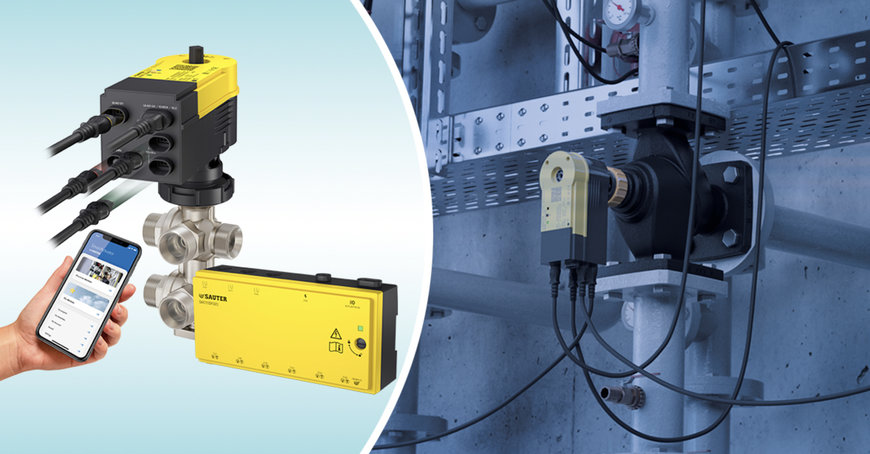smartbuildingmag.com
08
'22
Written on Modified on
Sauter-Controls News
SMART ACTUATOR PRODUCT LAUNCH: IOT FOR NEW BUILDINGS AND REFURBISHMENTS
SAUTER is expanding its range with the new generation of IoT-capable actuators. The Smart Actuator enables autonomous or semi-autonomous control in heating, ventilation and air conditioning. Additional benefits include simple installation and commissioning, cloud connection with application library and remote access, as well as a smartphone app.

Valves and actuators are key components in energy distribution. They are deployed in heating and ventilation systems as well as room automation. Time and again, traditional systems present challenges to the operators during installation. The new Smart Actuator from SAUTER simplifies the planning, installation and operation of HVAC systems in new or modernised buildings. It offers decisive advantages for all user groups.
Easy installation and commissioning
The connector system in combination with pre-assembled cables ensures particularly fast installation. Mechanical and colour coding not only prevents wiring errors, but also results in cost savings. Tested and ready-programmed applications can be loaded and configured directly on the Smart Actuator via the smartphone app. Additional software is not necessary.
Field devices such as sensors that are required for the application can be connected directly to the actuator via two universal I/Os. The optional I/O module allows the range of applications to be extended comprehensively.
Connectivity, IoT and cloud connection
The Smart Actuator has communication interfaces for every use case and thus integrates seamlessly into all building automation systems. If a building automation network is already present, the Smart Actuator can be incorporated via BACnet MS/TP. Installers, service technicians and facility managers can access the Smart Actuator’s operating data, settings and controls remotely via the SAUTER Cloud using their smartphones. All the data can be accessed via Bluetooth LE without a network connection. A solution library is available in the cloud.
Semi-autonomous or even autonomous control for distributed intelligence
Decentrally installed, control tasks are performed autonomously by the Smart Actuator without additional automation stations. This means it is even possible to completely dispense with central plant automation. If this is not desired, interfaces for system integration enable semi-autonomous control within the overall system.
Advantages of distributed intelligence:
- More robust systems, no single point of failure
- Less use of resources (no cable harnesses or wiring costs)
- More compact systems, smaller control cabinets, reduced fire loads
- Better system modularity
- Simplified software and hardware structure – independent of architecture

